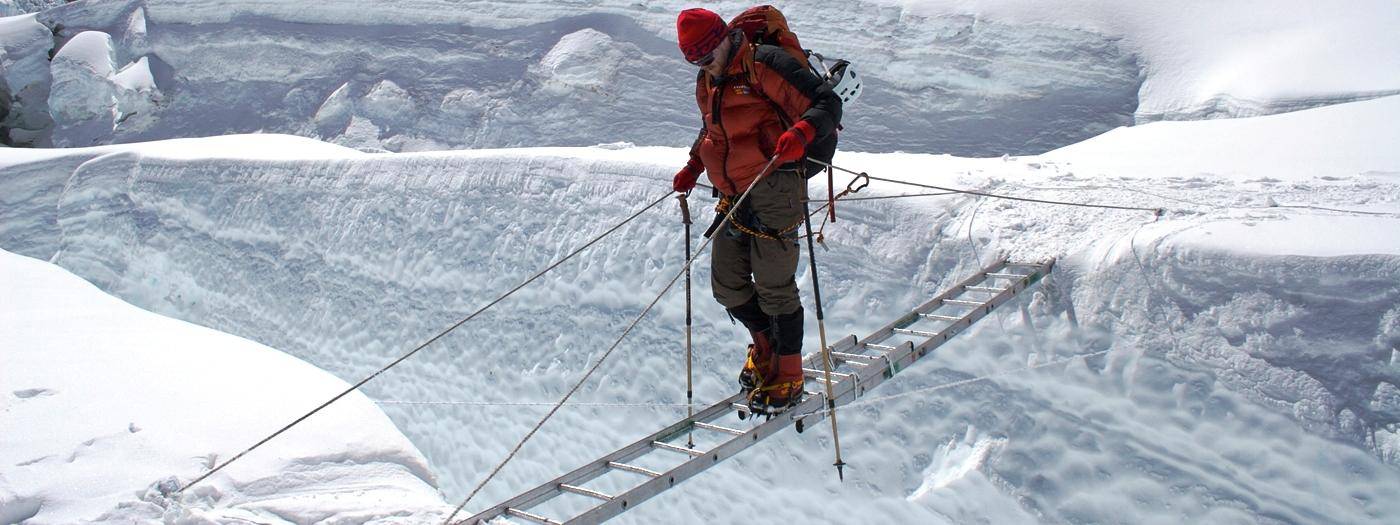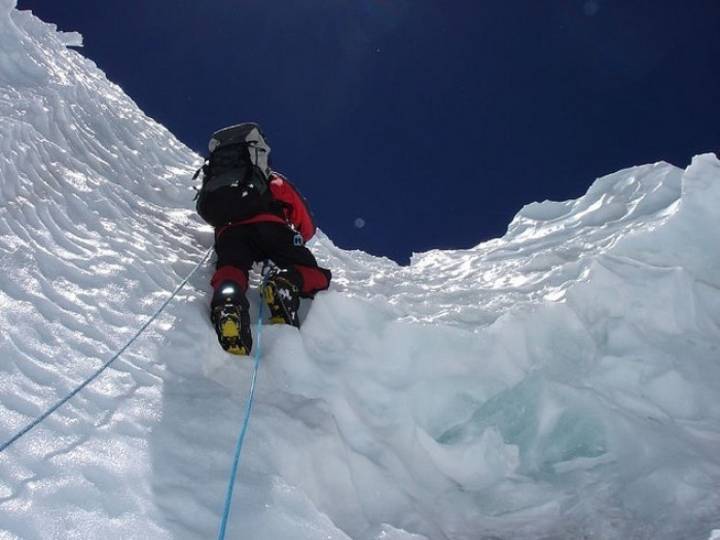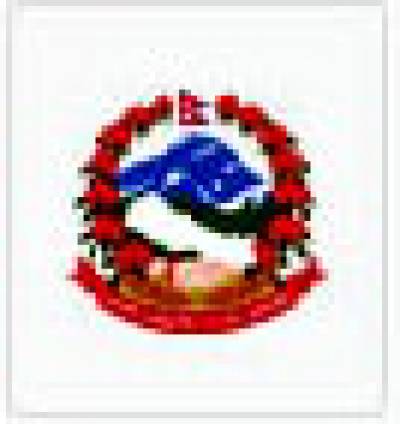EVEREST EXPEDITION ( NORTH)
Do you have nerves of steel?
This is a once in a lifetime opportunity to scale the world’s highest mountain (8848m/ 29,028ft) via the North Face. Everest tops the list of all serious high altitude climbers. This is truly as high as you can go anywhere in the world. Why the north face? It is said to be technically more difficult due to the amount of time spent at higher altitudes and is far less crowded during the climbing season. The South route has the notorious Khumbu Glacier, but despite this, the North Face is still technically more challenging. The North Face of Everest, or Sagamartha in Nepali, is reached from within Tibet, whereas the southern access is from Nepal. This expedition will give you all the climbing experience a climber would expect before climbing such a colossal peak. You will spend days acclimatizing and will practice climbing to higher camps and returning, all the while eliminating the possible danger of altitude sickness. This is a major reason for many failed attempts on Everest – not being properly acclimatized.
Everest was first referred to as Peak XV and was later named Mt. Everest after the lead surveyor Sir George Everest who surveyed the mountain in 1856. It wasn’t until May 25, 1960, that New Zealander Edmund Hillary and Nepali, Sherpa Tenzing Norgay finally reached the summit via the south route. The first summit via the north route was accomplished by a group of Chinese climbers.
The ascent from the north side, in Tibet, is considered more stunning as you climb 3,000m from the Rongbuk Glacier below on the Tibetan Plateau. As with all climbing expeditions, there is a journey that is said to be as important as the destination. In this case, you will be exposed to the pure Buddhist Tibetan traditions in the region. Your guides will be Sherpas, whose faith is deeply rooted in Buddhism. Sherpas will do “puja”(prayers) prior to any ascent of a mountain. Their faith and strength are unparalleled when it comes to climbing. No one does it better!
The Mount Everest Expedition is without a doubt a once in a lifetime opportunity. However, there are inherent dangers in climbing Everest, such as previously mentioned, altitude sickness, as well as severe weather conditions and avalanches. Anyone considering this climb should have several 600m or 7000m climbs under their belt. You must be familiar with all aspects of using the equipment of high altitude expeditions. You will also need to be extremely fit, both physically and mentally. Prior to heading to Everest, it is advised that you strengthen your cardiovascular system and physical strength. At these high altitudes, oxygen levels drop around 60-70 percent compared to sea level. You will also be required to carry a large pack containing oxygen and other equipment.
The Base Camp is situated below the Rongbuk Monastery in Tibet. A 20 km trek from here takes you to the Advanced Base Camp (ABC) situated on the rough and uneven ground exposed to high winds. The climb from ABC to East Rongbuk Glacier takes you across snow-laden slopes to the North Col where Camp 1 is located between Everest and Changtse. Crossing another long snowy slope takes you to Camp II. The climb from camp II to camp III is exposed to extreme weather and can be dangerous. It is mostly rock, and a mistake here can be lethal. There are fixed ropes to assist and minimize danger. Once you reach Camp III you will notice a decrease in oxygen levels. Leaving Camp III you may feel the need for oxygen as you head across rocky terrain to Camp IV using fixed ropes. Camp IV is a relatively small camp where we will not linger before heading to the North East Ridge where you face the first challenging obstacle, known as the first step – rock structure close 30 meters high requiring a steep climb before facing the second step, a 40m rock structure and probably the greatest challenge on the way to the summit. Again you will climb until you reach the third step of 25m, considered to be the easiest of the three steps. You will finally reach the summit from where you will look down on the world and have an enormous and overwhelming sense of achievement – unlike anything else you have done in your life.
Sherpa Expedition and Trekking’s Sherpa guides (well known for their climbing skills) will do everything within their power to lead you safely to the summit. Our guides are government certified and experienced climbers. We take no chances with your well-being and hence have allowed several days to make up for unforeseen circumstances, such as adjusting to higher altitudes and the possibility of altitude sickness.
ITINERARY
Day 1 : Arrival In Kathmandu & Transfer to the Hotel (1,350)
Day 2 : Rest day in Kathmandu: Tibet Visa Preparation
Day 3 : Tibet Visa Issue and Expedition briefing
Day 4 : Rest In Kathmandu
Day 5 : Fly from Kathmandu to Lhasa (3,650m)
Day 6 : Drive from Lhasa to Shigatse (3,800m)
Day 7 : Drive from Shigatse in Old Thingri (4,300m)
Day 8 : Acclimatization and Preparation day in Old Thingri
Day 9 : Acclimatization and Preparation day in Old Thingri
Day 10 - 12 : 3 more Nights Stay in Chinese Basecamp (5,100m)
Day 13 : Trek from Chinese Basecamp to Intermediate Camp (6,200m)
Day 14 : Ascend from Intermediate Camp to Advance Basecamp (6,500)
Day 15 - 51 : Climbing Period [Adv. Basecamp – Mt. Everest Summit (8,848m) – Adv. Basecamp]
Day 52 : Descend from to Advance Basecamp to Chinese Basecamp
Day 53 : Descend from to Advance Basecamp to Chinese Basecamp
Day 54 : Drive back from Chinese Basecamp to Thingri
Day 55 : Drive from Thingri to Kerung
Day 56 : Cross the border and drive to Kathmandu (Overnight stay at Hotel)
Day 57 : Leisure day in Kathmandu City
Day 58 : Transfer to International Airport for final departure
SERVICES
Cost Includes
- All airport/hotel transfers in Nepal
- 4 nights in the famous Hyatt Regency 5-Star hotel on a sharing basis, including breakfasts. Please note that additional charges occur for a single room (upon request)
- 4 dinners in Kathmandu
- Guided sightseeing tour in Kathmandu
- All entry fees to the World Heritage sites of Kathmandu
- Visa for Tibet (China)
- International flight Kathmandu - Lhasa and back to Kathmandu
- Sightseeing tour in Lhasa, and surroundings
- Everest Expedition permit
- All ground transportation as per defined itinerary
- Accommodation in Chinese hotels until Base Camp, on a sharing basis
- All principal meals (except lunches in Kathmandu)
- Excellent Base Camp / Advanced Base Camp facilities (individual tent, mess tent, kitchen tent, communication tent, WC & shower tents)
- High camps facilities (double basis tent, isolated mattress, gas cooker)
- The well-qualified and experimented staff: Nepali UIAGM guide, Sherpa team (1 climbing Sherpa per Expedition member), kitchen team (salary, permit, summit bonus, insurance, accommodation and meals, transportation)
- 7 high-quality oxygen bottles per member
- 3 high-quality oxygen bottles per climbing Sherpa
- Route fixing costs
- Transport by yaks of the luggage and collective material from Base Camp to Advanced Base Camp
- Medical box, with emergency oxygen at BC / ABC
- First aid kits in high camps
- 24-hour high altitude medical assistance for emergency cases
- Travel and rescue arrangement
- Weather forecast
- A communication devise for the mountain
- Satellite phone (except personal communication and internet)
- Solar system and heaters (at some hours of the day, mess and shower tents)
- 1 night in the "Last Resort" after the Tibet (China) border, on the way back
- International Cargo custom clearance in Nepal up to 400 kg
- Wild Yak Expeditions postcards
- All governmental and local taxes in Nepal and Tibet
Cost Excludes
- International flight to Kathmandu
- Nepal entry visa fee (easy to obtain the visa on arrival at Tribhuvan International Airport – Kathmandu). $30 USD for 15-day, $50 USD for 30 Days, and $125 USD for 90 Days visa.
- Excess baggage charges for the international flight
- Lunches in Kathmandu
- Travel cancellation and rescue insurance
- Personal climbing Equipment
- Personal expenses (individual beverages, phone calls, satellite phone, Internet, laundry, bar bills, and all other personal items)
- Optional trips and sightseeing, if extended (Visa for Tibet in such a case)
- Tips (guide, assistant guide, porters, yak man, driver, city guide, etc.)
- Extra night(s) accommodation in Kathmandu or in Tibet due to early arrival, late departure, early return for the Mountain due to any reason which is not caused by Sherpa Expedition and Trekking, or in case of early summit success, including the meals
- Any other expense that is not included in the quoted price.
EQUIPMENTS
Travel Documents
- Valid Passport
- Credit Cards
- Pp Size Photo (4 Pieces)
- Insurance Paper And Contact Address.
- Family Members / Company’s Contact Address
Foot Wear
- Kailas / Lasportiva / Millet (Summit Shoe)
- Normal Socks (5-6 Pairs)
- Summit Socks (2 Pairs)
- Trekking Shoes (1 Pair)
- Camp Booties (1 Pair)
- Basecamp Slipper (1 Pair)
Upper Body
- Light Weight Top / Thermo Coat (2-3 Layers)
- Mid Weight Top (2-3 Layers)
- Heavy Weight Top (2 Layers)
- Fleece Jacket (1)
- Gore Text Jacket (1)
- Down Jacket (1)
- Wind Proof Jacket
- Cotton T-Shirt For Base Camp. (2-3)
Lower Body
- Light Weight Long Under Pants (2-3 Pairs)
- Under Wear (5-7 Pairs)
- Mid Weight Long Under Pants (2-3 Pairs)
- Heavy Weight Long Under Wear
- Gore Text Pant. (1)
- Down Pants. (1)
- Water Proof Pant. (1)
Head
- Sun Cap
- Desert Cap
- Balaclava
- Fleece Hat
- Neck Gaiter (2-3)
Hands
- Thin Fleece Gloves (2 Pairs)
- Wind Stopper Fleece Gloves
- Heavy Gloves (Mitten)
- Summit Gloves
Sleeping Bags
- Sleeping Bag - 20 Degree Celsius (For Base Camp)
- Down Sleeping Bag - 20 To -40 Degree Celsius (Extreme Comfort)
- Thermarest Mattress (Cell Foam)
- Thermarest Mattress (Inflatable)
Climbing Equipment
- Climbing Helmet
- Down Suit (Kailas / Marmot / Mountain
- Hardware / North Face / Millet )
- Crampons (Fit with Boot)
- Ice Axe
- Harness
- Atc Guide
- Jummer / Ascender
- Lock Carabiner (3)
- Unlock Carabiner (3)
- Tape Slings (2)
- Prusik Loops (1)
- Snow Goggle
- Head Light (4 Pairs Rechargeable Batteries Recommended)
- Satellite Phone
- Hand Warmer (If Possible)
Bag Packs
- Rucksacks 45L - 55L
- Duffle Bag 90 L -120 L (2 Pieces)
- Water Proof Stuff Sacks Large (2 Pieces)
- Water Proof Stuff Sacks Small (2 Pieces)
Sun Stuffs
- Banana Boat/ Nivea Sun Cream -50 (Spf)
- Lip Guard -20 / -50 (Spf)
- Sun Glasses (UV Protection)
- Glaciers Glasses (UV Protection)
Toiletries
- Hand Disinfectant
- Wet Tissue
- Toothpaste
- Toothbrush
- Soap
- Shampoo
- Garbage Bag
Eating & Drinking
- Water Bottle (2)
- Thermos
- Mug
- Spoon/ Fork
- Bowl
Medical
- Brufen / Ibuprofens
- Antibiotic
- Diamox
- Paracetamol
- Handy Plaster
- Crack Bandage
- Tincture Iodine
Miscellaneous
- Walking Stick
- Pocket Knife (Swiss)
- Umbrella / Rain Coat
GOOD TO KNOW
Here are some important things to know about an Everest Expedition:
1. Physical Fitness: Climbing Mount Everest is a physically demanding and challenging endeavor. It is crucial to be in excellent physical condition and have prior experience in high-altitude mountaineering. Regular cardiovascular exercises, strength training, and endurance-building activities are essential to prepare your body for the expedition.
2. Climbing Experience: Climbing Mount Everest requires prior experience in high-altitude mountaineering. It is recommended to have successfully climbed peaks above 6,000 meters (19,685 feet) and have experience with technical climbing skills, including using crampons, ice axes, and ropes.
3. Permits: Climbing Mount Everest requires obtaining permits from the China government. These permits include the Everest climbing permit, Sagarmatha National Park entry permit, and Khumbu Rural Municipality permit. It is important to work with a reputable mountaineering agency that can assist you in obtaining the necessary permits.
4. Climbing Route: The most popular climbing route on Mount Everest is the South Col route from the Nepalese side. This route is known for its challenges and is attempted by the majority of climbers. Other routes, such as the North Ridge from the Tibetan side, are less crowded but require additional logistical arrangements.
5. Climbing Season: The climbing season for Mount Everest is typically in the spring (April-May) and autumn (September-November). These seasons offer more stable weather, fewer storms, and better climbing conditions. It is advisable to plan your expedition during these times to increase your chances of success.
6. Acclimatization: Proper acclimatization is crucial when climbing Mount Everest. It involves gradually ascending to higher altitudes, allowing your body to adapt to the reduced oxygen levels. This process helps minimize the risk of altitude sickness and improves your chances of reaching the summit. Acclimatization periods are built into the expedition schedule.
7. Sherpas and Guides: Hiring experienced Sherpas and guides is highly recommended for a successful Everest Expedition. Sherpas are local experts who have extensive knowledge of the mountain, its routes, and the challenges it presents. They provide crucial support, help with logistics, and ensure the safety of climbers.
8. Safety Considerations: Climbing Mount Everest involves inherent risks, including altitude sickness, avalanches, extreme weather conditions, and crevasses. It is essential to be aware of these risks and take necessary precautions. Following the guidance of experienced guides, using proper equipment, and being prepared for emergencies are essential for safety.
9. Environmental Responsibility: Mount Everest is a fragile environment, and climbers should practice responsible mountaineering. Follow the principles of Leave No Trace, respect the local culture and customs, and dispose of waste responsibly. Minimize your impact on the mountain and preserve its natural beauty.
10. Mental Preparation: Climbing Mount Everest is as much a mental challenge as a physical one. It requires perseverance, mental strength, and the ability to handle adversity. Prepare yourself mentally for the long and arduous journey, as well as the potential difficulties and setbacks you may encounter.
Embarking on an Everest Expedition is a significant undertaking that requires careful planning, preparation, and experience. Working with a reputable mountaineering agency and experienced guides is crucial for a safe and successful climb. Respect the mountain, embrace the challenge, and enjoy the incredible experience that climbing Mount Everest offers.
MAP
PHOTOS/Videos
Departures
Select a departure month
Fill out the form below and a Travel Expert will reach out to create your perfect tour.
FAQS
What is the North side of Mount Everest?
The North side of Mount Everest refers to the Tibetan side, which is the less crowded and less popular route compared to the South side in Nepal. It offers a different perspective and climbing experience.
How do I reach the North side of Mount Everest?
To reach the North side, you will need to travel to Tibet and obtain the necessary permits. The journey typically involves flying to Lhasa, the capital of Tibet, and then driving to the base camp located at Rongbuk Monastery.
What is the climbing season for the North side of Mount Everest?
The climbing season for the North side is similar to that of the South side, which is typically in the spring (April-May) and autumn (September-November). These seasons offer more stable weather and better climbing conditions.
Are there any significant differences between the North and South side routes?
Yes, there are some notable differences between the North and South side routes. The North side is generally considered to have a less technical climb, but it involves navigating steep slopes, traversing glaciers, and dealing with high-altitude challenges. The South side, on the other hand, has the famous Khumbu Icefall and the Hillary Step, which are more technically demanding.
How long does it take to climb Mount Everest from the North side?
The duration of the climb can vary depending on several factors, including weather conditions, acclimatization schedule, and individual fitness levels. On average, it takes around 60-70 days for a complete Everest Expedition from the North side, including acclimatization periods and summit attempts.
Do I need prior mountaineering experience to climb Mount Everest from the North side?
Yes, prior mountaineering experience is highly recommended when attempting to climb Mount Everest from the North side. It is important to have experience with high-altitude climbing, technical skills, and knowledge of using mountaineering equipment.
Can I hire Sherpas or guides on the North side?
Yes, you can hire Sherpas or guides on the North side. They provide crucial support, help with logistics, and ensure the safety of climbers. It is advisable to work with a reputable mountaineering agency that can provide experienced Sherpas and guides.
What are the safety considerations on the North side of Mount Everest?
Similar to the South side, the North side also presents inherent risks such as altitude sickness, avalanches, extreme weather conditions, and crevasses. It is important to be aware of these risks, follow safety protocols, and have proper equipment and emergency plans in place.
What permits do I need for an Everest Expedition from the North side?
You will need to obtain permits from the Chinese government to climb Mount Everest from the North side. These permits include the Tibet Travel Permit, Aliens' Travel Permit, and the Mountaineering Permit. Working with a reputable mountaineering agency can assist you in obtaining the necessary permits.
How should I prepare mentally for an Everest Expedition from the North side?
Preparing mentally for an Everest Expedition involves understanding the challenges, having a positive mindset, and being mentally resilient. It is important to prepare for the physical and mental demands of the climb, as well as potential setbacks and difficulties that may arise.
Latest Traveller’s Reviews
Travel experiences of our clients who recently returned from their trips.
100%
Based On 2 Reviews
Margaret Lunghi
Austria
October 4, 2023
Conquering the Mighty Mount Everest from the North Side
Embarking on a journey to summit Mount Everest from the North Side in China was a lifelong dream that I had the privilege to fulfill, thanks to the exceptional guidance of our Sherpa Expedition Guide. This review is dedicated to expressing my utmost gratitude for his professionalism, expertise, and unwavering commitment to our safety and success. From the moment we met our guide in Lhasa, his warm and welcoming demeanor immediately eased any nerves or uncertainties we had about the challenging journey ahead. He meticulously organized every aspect of the expedition, from permits and logistics to equipment and acclimatization schedules. His attention to detail and thoroughness were evident from the start. As we embarked on the trek towards the Everest Base Camp, our guide's knowledge of the region and the mountain itself was truly impressive. He shared captivating stories about the history and significance of Mount Everest, enhancing our understanding and appreciation of this majestic peak. His passion for the mountains and the Sherpa culture was contagious, igniting a sense of awe and reverence within our group. The ascent to the summit was undoubtedly the most physically and mentally demanding part of the expedition. However, our guide's unwavering support and guidance were instrumental in keeping our spirits high and our determination strong. He closely monitored our physical condition, ensuring that we acclimatized properly and minimizing the risk of altitude sickness. Reaching the summit of Mount Everest was an indescribable moment of triumph. The panoramic views from the top were nothing short of breathtaking, with snow-capped peaks stretching as far as the eye could see. Our guide allowed us sufficient time to absorb the beauty and capture memories that will last a lifetime. In conclusion, I cannot recommend our Sherpa Expedition Guide highly enough. His expertise, professionalism, and genuine care for our well-being were evident in every aspect of the journey. If you are considering embarking on a Mount Everest expedition from the North Side, I strongly urge you to choose a guide who possesses the qualities and skills that our guide demonstrated. You will be in safe hands and have an experience that will surpass your wildest dreams.
Dan Hartley
Australia
June 29, 2023
A Life-Changing Adventure with Unparalleled Views
Embarking on an expedition to summit Mount Everest from the North Side in China was a remarkable journey that exceeded all expectations, thanks to the exceptional Sherpa Expedition Guide who led us every step of the way. I am forever grateful for his expertise, dedication, and unwavering support throughout this incredible adventure. From the moment we met our guide in Lhasa, his passion for the mountains and his deep knowledge of the region were evident. He meticulously planned every detail of the expedition, ensuring that our safety and well-being were always a top priority. His attention to detail and thoroughness gave us the confidence to tackle the challenges that awaited us. As we trekked towards the Everest Base Camp, our guide's expertise and familiarity with the terrain were invaluable. He effortlessly navigated us through rugged landscapes and ever-changing weather conditions, sharing fascinating insights about the mountain and its surroundings. His ability to adapt to unexpected circumstances and make informed decisions instilled trust and confidence in our team. The ascent to the summit was undoubtedly the most demanding part of the journey. However, our guide's unwavering support and encouragement kept us motivated even during the most challenging moments. He closely monitored our physical condition, providing guidance on acclimatization techniques and ensuring our safety at all times. Reaching the summit of Mount Everest was an awe-inspiring achievement that will forever be etched in my memory. The breathtaking views from the top were beyond imagination, with towering peaks and vast glaciers stretching as far as the eye could see. Our guide allowed us ample time to soak in the beauty and capture photographs that will serve as cherished mementos of this extraordinary experience. In conclusion, I wholeheartedly recommend our Sherpa Expedition Guide to anyone considering a Mount Everest expedition from the North Side in China. His professionalism, knowledge, and genuine care for our well-being were evident throughout the entire journey. Choosing a guide of such caliber will ensure that you have a life-changing adventure and create memories that will last a lifetime.
People Considering This Package Right Now Check availability
























